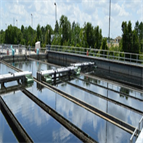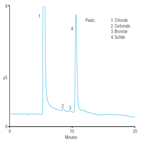Find methods for your needs
Refine by Feature
Displaying 1-5 of 6 results for Tag: seawater
Simultaneous Determination of Oil Dispersants in Seawater and Crude Oil by LC and Tandem MS
Instrument Type: LCMSMSOn April 20, 2010 the Deepwater Horizon (MC-252) oil platform caught fire and sank in the Gulf of Mexico, creating a large release of oil and gas from the riser pipe and uncapped well head. Containment efforts included heavy use of oil dispersants Corexit EC9500A and Corexit EC9527A which were approved for use in the Gulf of Mexico oil spill by the U.S. EPA. Tracking Corexit in the environment is a priority due to its low-to-moderate toxicity. We describe an analytical method capable of detecting its presence in seawater even when large dilution factors are expected.
Fully Automated, Trace-Level Determination of Parent and Alkylated PAHs in Environmental Waters by Online SPE-LC-APPI-MS/MS
Instrument Type: LCMSMSPolycyclic aromatic hydrocarbons (PAHs) are persistent organic pollutants produced by both human activities and natural phenomena. PAHs enter surface waters mainly by atmospheric fallout, urban runoff, municipal and industrial effluents, and the spill or leakage of petroleum and its derivates. We developed a fast, fully automated protocol for determining a large number of parent PAHs and alkylated PAHs in environmental waters, using online solid–phase extraction coupled with liquid chromatography and tandem mass spectrometry.
AU168: Determination of Transition Metals in Complex Matrices
Instrument Type: ICChelation ion chromatography facilitates the determination of low concentrations (μg/L and lower) of transition metals in samples including seawater, brines, estuarine waters, and a variety of biological samples. Here, the authors simplify the system configuration described in Technical Note 25, using an ICS-3000 system. The separation has also been updated to include the IonPac CS5A/CG5A column set, which demonstrates improved selectivity and peak efficiency for separation of transition metals compared to the CS5.
AN260: Monitoring Inorganic Anions and Cations During Desalination (Part B: Cations)
Instrument Type: ICThis work describes an IC method to simultaneously measure the common anions and cations in water samples obtained from desalination processes. This record shows the method for cation analysis. The method was shown to be accurate by the good recovery of cations in a wide variety of samples including natural and artificial seawater and drinking water. The methods for cations and anions are robust for all ion-monitoring needs of a typical desalination facility and support a varying range of matrices from seawater to drinking water.
AN260: Monitoring Inorganic Anions and Cations During Desalination (Part A : Anions)
Instrument Type: ICThis work describes an IC method using a Dionex ICS-3000 system with IonPac AS18 anion-exchange and CS12A cation-exchange columns, electrolytically generated hydroxide and methanesulfonic acid eluents, and suppressed conductivity detection to simultaneously measure the common anions and cations in water samples obtained from desalination processes. This IC method supports all the monitoring needs of a desalination facility because it can measure anions in diverse matrices ranging from seawater to drinking water.





